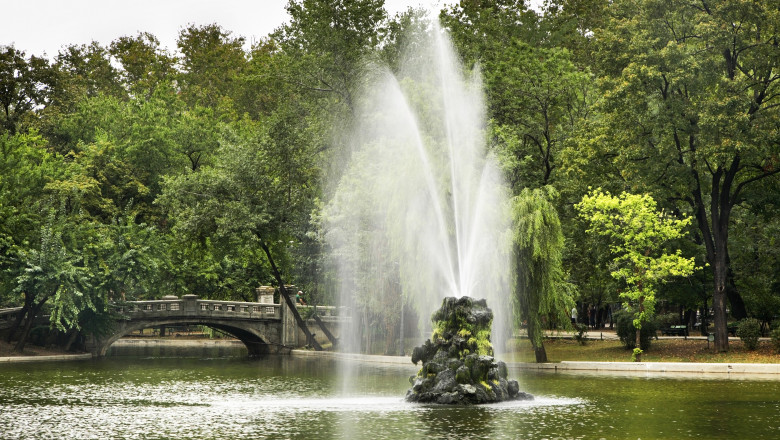
Bordered by Regina Elisabeta Boulevard and Schitu Măgureanu Boulevard, Grădina Cişmigiu is the oldest public garden in Bucharest, having been inaugurated in 1854.
However, its story is much older, it begins in the year 1780, when Alexandru Ipsilanti, lord of Wallachia, ordered the Great Cişmigiu, i.e. the head of the works over the city’s chimneys, to build two chimneys in this area. However, the puddle caused by the boots and the groundwater whose level rose especially when it rained had become a big problem.
In 1830, General Pavel Kiseleff ordered the draining of the pond and the transformation of the land into a public garden. Two landscapers, Wilhelm Mayer, the former director of the Imperial Gardens in Vienna, and Franz Harer, were the ones who transformed the pond into a gorgeous garden during the reign of Gheorghe Bibescu.
After the abdication of Gheorghe Bibescu, in 1848, the new ruler, Barbu Ştirbei, decided to dig a helesteu and a connecting canal with Dâmboviţa. Over 30,000 trees and shrubs brought from the counties of Ilfov, Prahova, Dâmboviţa, Gorj, Braşov were planted. Moreover, exotic plant species are brought, such as magnolias, decorative apples with red flowers, curly ash trees, Japanese cherries, Pavlonia trees. The plane tree in Cișmigiu, as tall as a 10-story block, has been the emblem of the park since 1854. At the inauguration, the plane tree was already the age dean of the entire area. Artificial grottoes, floral carpets, bridges were also made and benches were installed. The beautification works of Cişmigi ended in 1854, and in the same year the official inauguration took place.
As for the guarding and maintenance of the Garden, they came under the authority of the Ministry of the Interior (Department of the Interior). The first order regulation of the Cişmigiu Garden was published in 1852 and provided punishments for destroying trees and plants, disturbing the public peace, damaging benches, fishing, riding a bicycle or sleeping on benches.
Until the First World War, Cișmigiu Garden hosted various popular celebrations and charity actions where high society ladies dressed up as peasants and florists. At the outdoor shows, Bucharest residents could see Romanian and foreign acrobats and traveling actors. Also here, the silver wedding of the Royal Family took place. During that period, the first newspaper kiosk in Bucharest was built – which still exists today, it is across the street from the General City Hall of the Capital.
In winter, the lake in the garden froze over and then figure skating competitions were held. During the summer, sports contests were held in Cișmigiu Garden, running around the lake, and the first boxing match in Romania’s history took place here. Also in Cişmigiu Garden, in 1912, the first beauty contest in Romania was organized.
Cismigiu Garden is not a place. Cișmigiu is a story that houses memories, emotions, signs of gratitude, signs of not forgetting, signs of the treasure waiting to be discovered.